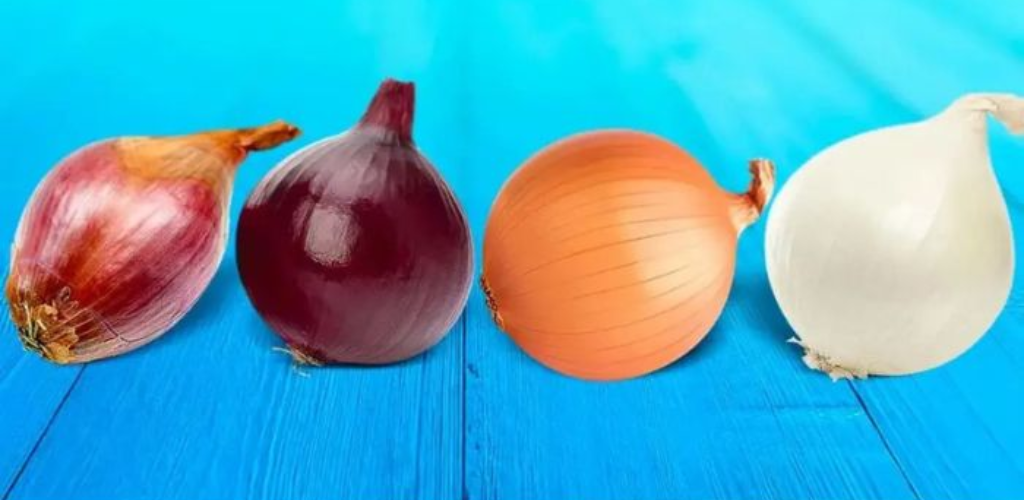Do you know the difference between red, white and yellow onions
They make us cry all the time… But it’s hard to do without them! They deserve to be shed a few tears, as they sublimate our recipes and give them a unique flavour. An extremely popular condiment in the culinary world, onions are full of mineral salts, vitamins and even all dishes, even the most basic ones. They come in all sauces, which can be eaten raw, cooked, caramelized or fried. But would you know the difference between a yellow, white or red onion?
It’s not just the colour that changes. The difference is also noticeable in texture and flavour. Each onion has its own peculiarities. And each dish requires a specific type of onion. Find out what distinguishes them from each other to cook them better!
How to choose your onions?
Onions
When buying onions, be sure to check their hardness and firmness. If they are heavy enough in your hand, don’t hesitate to pick them up. Avoid buying those that are too soft, have a suspicious appearance or have a strong smell even before you peel them. In general, these are the signs that suggest that the onion is old or rotten.
Read also: Leave an onion in the freezer before going to sleep – everyone does it now!
Good to know: Apart from sweet onions, you can keep all other types of this vegetable for weeks in your pantry or in a cool cupboard.
What is the difference between different onions?
Yellow onion
Yellow onions
It is surely the most popular and common variety in cooking. Cultivated all over the world, also called “straw onion”, it is a general condiment that lifts a variety of dishes: stews, sauces, gratins, gratin soups, etc. It is distinguished by its well-pronounced and balanced flavour, sometimes sour, sometimes sweet. Perfect for cooking, it can be easily caramelized and combined with spicy and acidic recipes to sweeten them. Usually small in size, with a fairly hard skin and a fleshy layer, yellow onions are more delicate to the taste than others. They are therefore very versatile and suitable for both frying and cooking. As a bonus, they keep longer than red onions. Store them away from light, in a cool, dry place.
White onion
If it is less frequent than the previous one in the kitchen, it is mainly because it appears only in hot periods, in spring and especially in summer. Also called “new onion”, the white onion is often small, with a thin skin and flesh highly concentrated in water. It has the particularity of being very crunchy. Rich in sulfur and sugar, it has a strong smell that irritates the eyes a little, but its flavor is sweeter and less spicy than that of the yellow onion. This variety can be cooked in the same way as the yellow onion, but it tastes better when ground, chopped or cut into thin slices to complement salads.
Red onion
Red onions
Halfway between pink and purple, this variety called “red onion” has a taste quite similar to the yellow onion, although sometimes more intense. Its skin is slightly less delicate and fleshy. And since this onion is particularly acidic and crunchy, it is enjoyed raw in salads, sandwiches and burgers. It is therefore best to avoid it in hot prepared meals. On the contrary, in rounds, this condiment brings a good dose of freshness and crunch to the taste buds.
Read also: How to cut onions without shedding tears?
Little tip: if you find red onion too sour and want to soften it before eating it raw, soak it for ten minutes in a bowl of cold water before consuming it. It will be much less spicy!
And what about sweet onions?
Presented in the form of a spherical, slightly flattened bulb, the sweet onion is very similar to a medium yellow onion due to its white and yellow color, with a tendency to copper or pearlescent, but it has a completely different flavor. It is not as spicy or sour, so its taste is much sweeter and gentler, without any bitterness. The advantage, being delicately juicy and crunchy, is that it can be enjoyed both cooked and raw. However, since this variety is slightly softer than the others, it will have a shorter shelf life and therefore will need to be refrigerated.
Read also: Why is it smart to put onions in the freezer?
😊 only educated members will say thanks 😊 The rest in the first comment
